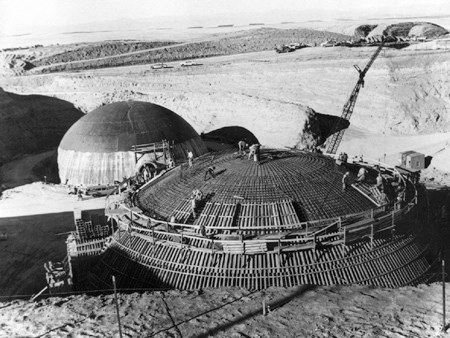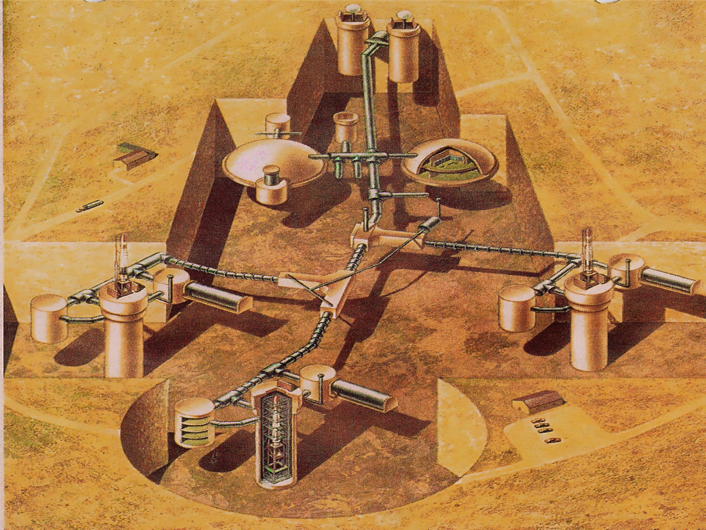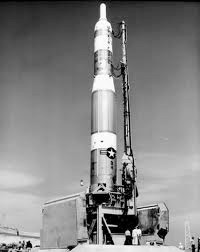Titan I missile silo


T minus 15 minutes -
T minus 14:10 - LOX (Liquid Oxygen) loading sequence starts.
T minus 4:41 - LOX loading complete.
T minus 4:39 - Antennas and launcher raise sequence started.
T minus 3:55 - South half of silo door commence opening
T minus 3:34 - North half of silo door commence opening. (South half at 30 degrees)
T minus 3:05 - Commence raising launcher.
T minus 1:10 - Launcher raised.
T minus 0:55 - Launcher locked.
T minus 0:25 - Guidance system locked.
T minus 0:00 - Engines fire.
Barring any unforeseen technical difficulties, it would take a full 15 minutes to emerge and launch a Titan I Intercontinental Ballistic Missile (ICBM) from its buried silo just beneath the earth’s surface. In Washington State there are scores of underground launch silos, cold war relics all but forgotten, lying dormant just under the earth’s crust.

Coined by George Orwell in his essay “You and the Atomic Bomb,” Cold War was a term that describe hostilities between the USSR and the United States and its western European allies, between 1947 (some say by the end of WWI) and the official dissolve of the USSR in 1991. During this time, a massive effort including over 2200 defense and civilian contractors, employing thousands of people, developed a plan for the WS-107A-2, also known as the Titan I Weapon System. The plan was to build an underground complex, a small city really, for staff to live and work in. In the unfortunate event of a nuclear threat, this complex would serve as a central zone to launch our missiles in a pre-emptive strike or counter attack.

This subterranean military structure housed three launch silos each containing an 84 foot long, 150 ton Titan I Missile with a W38 thermonuclear warhead with a 3.75 megaton yield. That was 250 times the yield of “Little Boy,” the device used to annihilate Hiroshima. Produced by the Martin Company, each missile had a range of 6300 nautical miles reaching speeds of 18,030 mph.
The construction of this colossal war complex began in 1959, with thousands working diligently, and was completed and operational in 1962. The silo itself is approximately 55 feet in diameter and 150 feet underground. If a nuclear attack was to come to U.S. soil the buried system had to withstand massive amounts of shock. The walls range in thickness from 2-3 feet of reinforced concrete. The silo doors, which were some of the few segments necessarily exposed to the outside world, were built with concrete and steel, weighing 125 tons.

The heart of the complex is the control room and the powerhouse. The control room measured 40 feet high and 100 feet in diameter, whereas the powerhouse measured in at 60 feet in height and 127 feet in diameter. Built as a large dome, the control room furnished the barracks, mess hall, showers, in addition to the launch control systems. The powerhouse dome contained all the main generators and power distribution systems. The whole system is interconnected by a thoroughfare of more than 2500 feet of tunnels, with the antenna silos being 1300 feet away from the launch silos.
This complex in particular had contracted 47 Titan I missiles built, and three were always alert during the Cuban Missile Crisis of 1962.

There were 18 total operational Titan I missile sites located in 5 states, and the development costs were immense, even for 1960’s dollars. Today a similar site would sum in the hundreds of millions just to construct, not to mention the furnishings which would amplify the costs. Of the 18 Titan I sites, not one survived longer than 4 years. They were systematically shut down, scrapped of their copper, steel and hardware, and abandoned for good. On March 25th, 1965 due to unforeseen circumstances, this site was inactivated. Some sites still remain government property; some were sold at auction, while others were turned over to the original landowners, as was the case with this one in eastern Washington.




-
-Home

